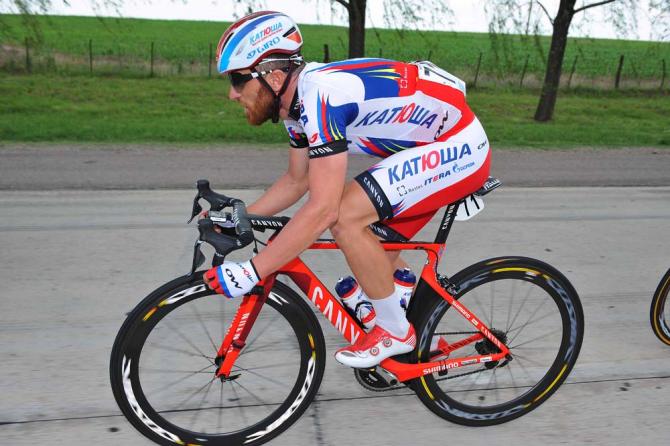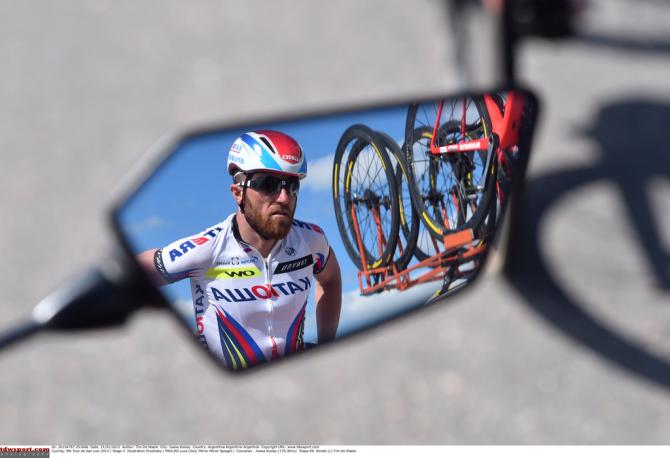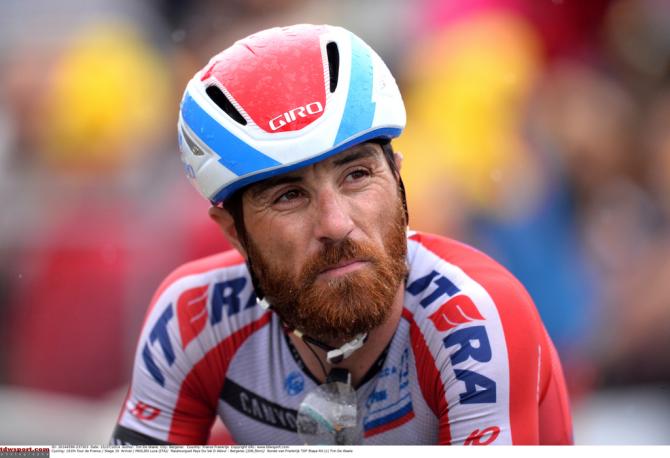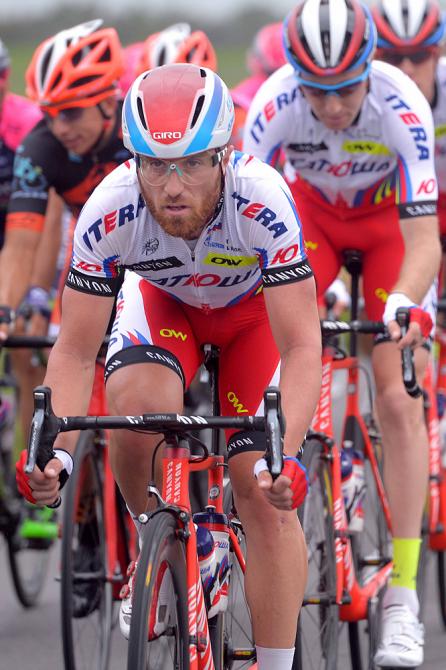Paolini goes the distance at the Tour de San Luis
“My objective is just to be 100 per cent at San Remo and the Classics," says Katusha rider




Each morning in San Luis, hours before the afternoon’s stage is due to begin, a bearded figure in Katusha kit pedals discreetly out the side entrance of the Vista Hotel, rolls down the Avenida Arturo Illia and then swings left towards open countryside.
The distances, speeds and sheer intensity of the Tour de San Luis are not to be sniffed at, but for Luca Paolini, at least, preparing for the new campaign in Argentina is not just about what happens between the start and finish line every day.
“Ah, it’s not a secret. I’m just looking to spin the legs in the morning and shake them out a bit, so I feel better during the stages,” Paolini told Cyclingnews. “And it’s useful when you’re trying to lose a few extra kilos too.”
Paolini has started his campaign in San Luis for the past three years, preferring to come here than go to the Tour Down Under because of the smaller time difference to Europe. “I did Down Under three or four times, and every time I felt pretty disorientated when I got home,” he explained.
These recent excursions to South America are a far cry from his first trip as a neo-professional back in 2000, when he lined up at the Vuelta a Argentina as part of the vaunted youth section of the Mapei squad, alongside Lazlo Bodrogi and Crescenzo D’Amore.
Indeed, Paolini picked up his first-ever victory at the race, landing the sprint in San Francisco on stage 2, although he has mixed memories of the occasion. When Saúl Morales of Relax-Fuenlabrada was killed following a collision with a truck on stage 7, Mapei and Paolini left the race due to concerns over rider safety.
“Unfortunately, there was a fatal accident but the organisation of that race was very different to what’s here now. There were a lot of gaps, let’s say, whereas on this race there’s the absolute maximum of security,” he said.
Get The Leadout Newsletter
The latest race content, interviews, features, reviews and expert buying guides, direct to your inbox!
“Personally, my approach to the race itself is a bit different too. In 2000, I came here with the young Mapei team looking to win stages. Obviously we have the same objective here but it’s more relaxed. We’re here because we know that this is a good place to get ready for March and April.”
Italian follows San Luis with Dubai, Qatar and Oman
The Argentinean race kicks off an intense period of early-season racing for Paolini and by Cyclingnews’ reckoning, no other rider should have more race days in his legs by the time Milan-San Remo comes around on March 22. Next month, Paolini will complete a mini Grand Tour in the Gulf when he rides the Tours of Dubai, Qatar and Oman, and after a two-week stint at home, he faces into Tirreno-Adriatico
“Well, I’m 38 now and what you find with the passing of the years is that you’re lacking rhythm and explosiveness when the season starts. So if you race a lot, you get back up to speed a lot sooner than you would through training alone,” Paolini said. “On top of that, I live in the north of Italy, where the weather isn’t exactly beautiful at this time of year and I’d risk losing out on too many days of training because of the rain or snow.”
Paolini’s self-imposed exile continues in March and early April. He travels to Belgium two days after Milan-San Remo and will remain there until he brings the curtain down on his Classics campaign at Paris-Roubaix, almost three weeks later.
“I prefer that to flying in and out for races. When you’re racing in Belgium you need to stay there and breathe that Belgian air,” Paolini said. “It’s a special place and when you’re there, you’re 100 per cent focused. I think if you want to do well, you need to stay in Belgium.”
The Italian finally ended a lengthy Classics drought when he landed Omloop Het Nieuwsblad in 2013 but his recent purple patch has coincided with the rise of Alexander Kristoff and he takes a pragmatic view of his place in the Katusha hierarchy. All things being equal, Kristoff is the leader, with Paolini content to flit between the roles of foil and co-captain.
“We’ve got a similar style of racing, we don’t need a big team sheltering us or setting things up for us, we’re two guys who can get to the front by ourselves,” he said. “My objective is just to be 100 per cent at San Remo and the Classics. If Kristoff is the same, he would certainly be the captain but I’d be the second leader, for sure.”
Paolini’s savvy helped to conjure up Milan-San Remo victory for Kristoff in 2014, as his turn on the front in the final kilometre secured the box seat for the Norwegian once the sprint on the Lungomare Italo Calvino began. This year sees La Classicissima return to its traditional Via Roma finish, and Paolini has earned the best supporting actor nod on that finale, too, when he helped Paolo Bettini fend off the bunch and then outfox Mirko Celestino back in 2003.
“I think it’s a lot more emozionante. With the Via Roma, you’re going back to the history of Milan-San Remo so I’m very happy that the finish is there,” Paolini smiled, though he noted that despite the finish line’s closer proximity to the Poggio, the fundamentals of the race remain unchanged.
“It’s still a finish for a rider who has the legs – the road rises slightly so you need a lot of power,” he said. “I don’t think it will change the race. As usual, it’s still going to be dangerous just before the Cipressa, and then from the Cipressa on, Milan-San Remo begins.”

Barry Ryan was Head of Features at Cyclingnews. He has covered professional cycling since 2010, reporting from the Tour de France, Giro d’Italia and events from Argentina to Japan. His writing has appeared in The Independent, Procycling and Cycling Plus. He is the author of The Ascent: Sean Kelly, Stephen Roche and the Rise of Irish Cycling’s Golden Generation, published by Gill Books.